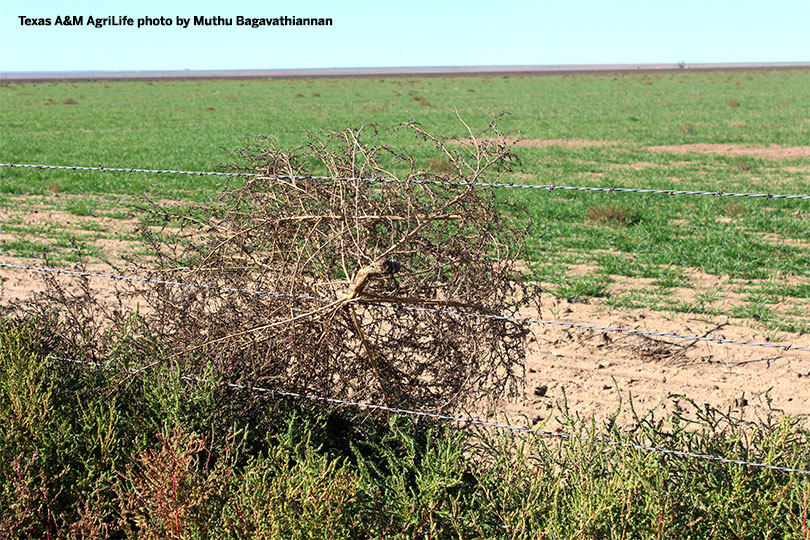By Jennifer Dorsett
Field Editor
Texas A&M AgriLife Extension Service scientists are concerned that kochia, a type of tumbleweed, is growing resistant to multiple herbicides. This poses serious problems for farmers and ranchers attempting to control the weed on the Texas High Plains.
The invasive kochia originated in Eurasia and has been seen in Texas since the 1940s, according to Texas A&M AgriLife Extension’s Virtual Herbarium.
Kochia is toxic to animals and can cause blindness, convulsions or sudden death if ingested by livestock.
Tumbleweeds spread so easily because after maturation, the plant breaks free from the ground and blows away in the wind, dispersing thousands of tiny seeds across the countryside as it rolls, according to Texas A&M AgriLife Research weed scientist Dr. Muthu Bagavathiannan.
Kochia and other tumbleweed species often get trapped and pile up along fence lines.
Bagavathiannan said that’s problematic because kochia can make a stand in those areas, leading to further establishments in nearby cropland and pastures.
Farmers, ranchers and landowners often spray a non-selective herbicide along the fence line that kills everything in its path. This can result in bare soil, which is ideal for weeds to germinate and flourish.
This practice also seems to be leading to an increase in herbicide resistance by the kochia plant.
Dr. Jourdan Bell, a Texas A&M AgriLife Extension Service agronomist in Amarillo, said multiple farmers in the area have experienced problems controlling kochia with glyphosate, dicamba, metsulfuron and fluroxypyr.
Resistance is a concern for farmers because crop yields can be greatly impacted by kochia infestations.
Her advice to farmers and ranchers looking to control kochia and other weeds is to implement a program using multiple herbicides.
“A successful program generally includes herbicides with residual activities in addition to post-emergence herbicides with several modes of action,” Bell said.
She noted most branches on the kochia plant have growing points—or areas where new branches can originate—so when a plant isn’t completely eradicated, it will still produce seed from lower branches in addition to contributing to herbicide resistance because it’s only been partially controlled.
Bagavathiannan has teamed up with experts from other universities across the Great Plains to further research the pattern of kochia’s herbicide resistance.

